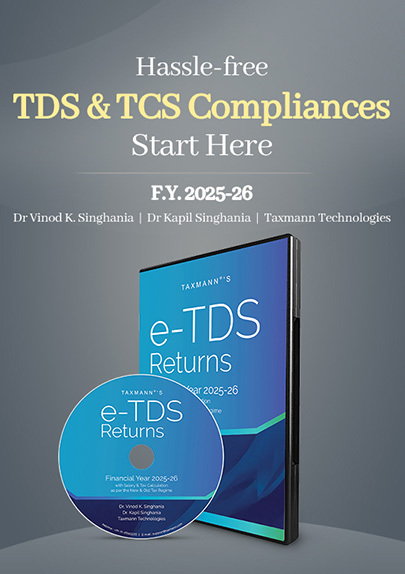[Opinion] New Income Tax Bill, 2025 – Is It Truly the Beginning of a Simpler Tax Regime?
- Blog|News|Income Tax|
- 2 Min Read
- By Taxmann
- |
- Last Updated on 19 February, 2025

Somesh Jain – [2025] 171 taxmann.com 450 (Article)
The draft of the New Income Tax Bill, 2025 has been unveiled, sparking excitement over its streamlined structure—fewer sections, fewer provisos, and simpler language compared to the existing Income Tax Act. In her budget speech, the Hon’ble Finance Minister emphasized that the new bill is designed to be easier to understand for both taxpayers and administrators, promising greater tax certainty and reduced litigation. However, whether it truly delivers on this ambitious goal remains a question only time can answer.
While not a perfect predictor, history is the best guide to the future. Anticipating what lies ahead is not possible but a look at 150 years old history of income tax laws, one thing is certain – complexity, uncertainty and litigation are here to stay.
It is not the first time when a new Income Tax law is being brought with an objective of making the law simpler and stable. Though Income Taxation is not a novelty introduced by the British, the first formal income tax law introduced in the year 1860 Sir James Wilson (British India’s first finance minister). It was divided into 21 parts, with 259 sections. This act was in force till 1886 (with it being abolished from year 1873 to 1877). During this short stint, with one object or another, twenty-three acts were passed on this subject amending the income tax law. Thus, the practice of frequently amendment the income tax law is not a novel one but has deep-rooted historical and legislative precedents.
Then came the Income Tax Act of 1886 and1918. The Act of 1918 was much nearer to the present Income Tax law than to the Act of 1886. The Act of 1922 repealed the Act of 1918 and brought significant reforms by transferring the administration of income tax from provincial authorities to the central government. Another key aspect of this legislation was that the rules would be determined through annual Finance Acts rather than being directly specified within the Act. This Act was extensively amended in 1939 to implement the recommendations of a Special Enquiry Committee.
Click Here To Read The Full Article
Disclaimer: The content/information published on the website is only for general information of the user and shall not be construed as legal advice. While the Taxmann has exercised reasonable efforts to ensure the veracity of information/content published, Taxmann shall be under no liability in any manner whatsoever for incorrect information, if any.

Taxmann Publications has a dedicated in-house Research & Editorial Team. This team consists of a team of Chartered Accountants, Company Secretaries, and Lawyers. This team works under the guidance and supervision of editor-in-chief Mr Rakesh Bhargava.
The Research and Editorial Team is responsible for developing reliable and accurate content for the readers. The team follows the six-sigma approach to achieve the benchmark of zero error in its publications and research platforms. The team ensures that the following publication guidelines are thoroughly followed while developing the content:
- The statutory material is obtained only from the authorized and reliable sources
- All the latest developments in the judicial and legislative fields are covered
- Prepare the analytical write-ups on current, controversial, and important issues to help the readers to understand the concept and its implications
- Every content published by Taxmann is complete, accurate and lucid
- All evidence-based statements are supported with proper reference to Section, Circular No., Notification No. or citations
- The golden rules of grammar, style and consistency are thoroughly followed
- Font and size that’s easy to read and remain consistent across all imprint and digital publications are applied



 CA | CS | CMA
CA | CS | CMA
